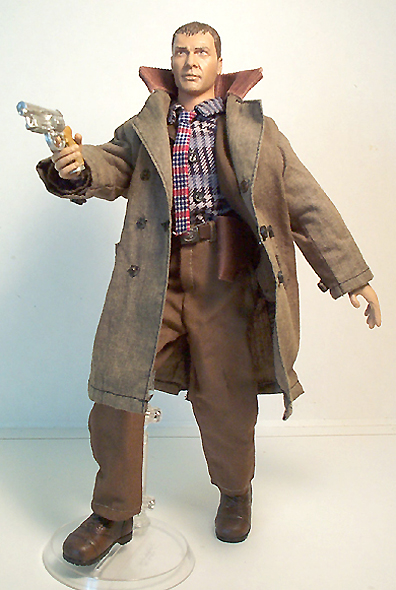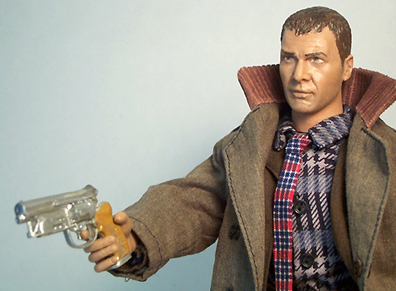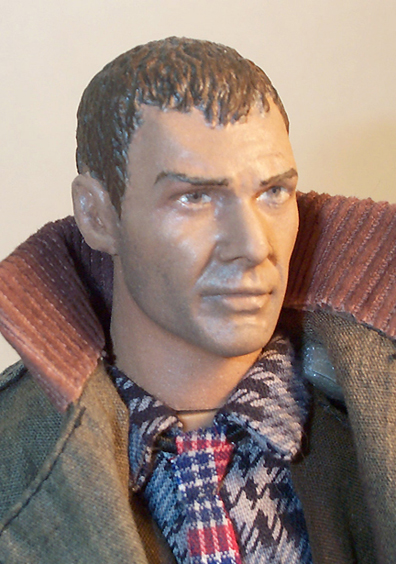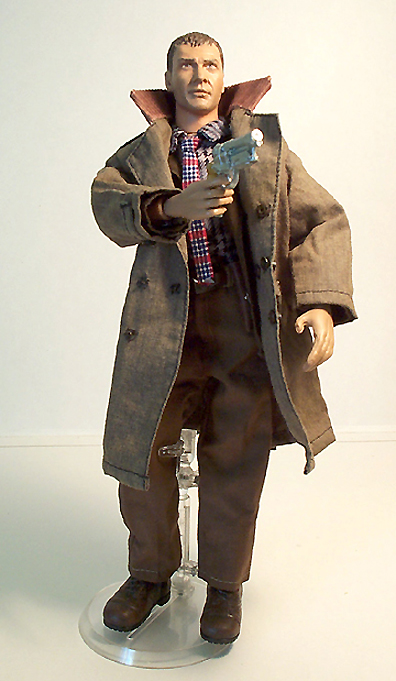
The year is 2019 AD,
the place is Los Angeles. Nuclear wars have poisoned Earth's
atmosphere; radiation is everywhere. Most animals have died.
Most people have migrated to space colonies on Mars.
Earth is a very difficult
place for humans. It is very under-populated, with many homes
and apartment buildings empty or with only a few inhabitants.
The space colonies
make extensive use of advanced androids ["replicants"] in
households and factories. Making replicants is one of Earth's
largest industries.
The leading maker of
replicants is Tyrell Co., led by Dr. Tyrell. Its latest model,
the Nexus-6, can be distinguished from humans only by a small
group of experts. Their brains are so advanced that Nexus-6
replicants think for themselves. The idea of a replicant rebellion
is starting to worry people.
It is now illegal for
the Nexus-6 replicants to come to Earth. To limit damage from
such replicants running amok or rebelling, their built-in
life span is only four years.
At a Mars space colony,
a small band of Nexus-6 replicants escapes and makes their
way back to Earth. Their mission: To confront Dr. Tyrell and
force him to extend their life span. Since Nexus-6 are considerably
stronger, faster and smarter than the average human, the success
of this mission might endanger all of mankind.
Authorities on Earth
are aware of the four outlaw replicants, and have persuaded
their best replicant bounty hunter [a.k.a. "blade runner"],
Rick Deckard, to hunt them down and kill them as fast as possible...

In completing BLADE
RUNNER, Ridley Scott, the director, ran up a cost of $60 million,
quite large for 1982. But when studio execs viewed the finished
film, they found they couldn't follow the story -- and didn't
much like what they could follow. They forced Scott to make
several changes in the film, including voice-overs and a more
upbeat ending.
Within three weeks
of BLADE RUNNER's release to theaters, another sci-fi film
made its debut, Steven Spielberg's E.T., THE EXTRA TERRESTRIAL
[1982] which went on to become one of the largest-grossing
films of all time. It overshadowed BLADE RUNNER, and took
away much of its natural publicity and audience.

The worst disasters
to befall BLADE RUNNER were the critic's reviews: Most found
little value in the script, the acting or the plot. The critics
refused to accept the idea of a story told mainly with visual
images. The only positive mention in every review was the
haunting, stunning visual impact of the sets.
It was the worst group
of reviews any Harrison Ford or Ridley Scott film ever received.
The film quickly went out of theaters and survived only in
video stores and on cable TV.
But a funny thing happened
with BLADE RUNNER. Many people who saw the film in theaters,
on television or video, loved it. They thought it was one
of the best sci-fi films they had ever seen.

In 1983, BLADE RUNNER
won the Hugo Award for best dramatic presentation of science
fiction, over E.T. In a poll of members at the 1992 World
Science Fiction Convention, BLADE RUNNER was named third best
science fiction film of all time, behind STAR WARS and 2001:
A SPACE ODYSSEY.
Word of mouth buoyed
the video rentals until, 10 years after its 1982 release it
had become a cult classic, revered by many newer critics and
film buffs. Sites on the Internet discuss it.

In 1993, Ridley Scott
brought out the "Director's Cut" of BLADE RUNNER, making needed
small improvements and ditching much of what the studio execs
had forced him to put in the first time around. There is now
a consensus among sci-fi fans, academics and serious critics
that BLADE RUNNER is one of the finest sci-fi films ever made.
A sorely-needed correction:
Due to the nature of critics' egos and the film industry,
up to now no one has seen fit to challenge or change the original
"two star" tag put on the film. Since it is clearly a "three
star" or "four star" film, there is always the chance that
one of the original critics might admit to a bad call the
first time around -- but that's not likely.
|